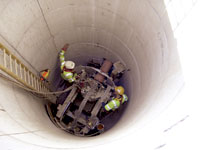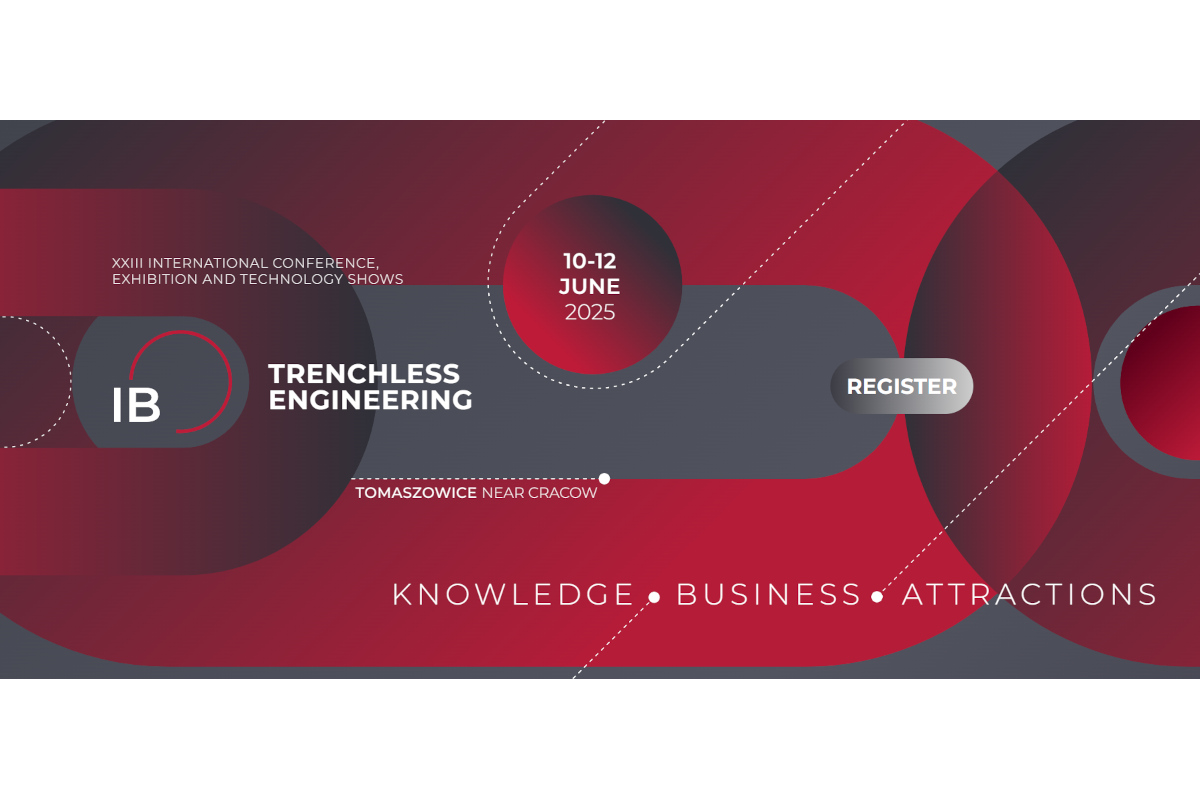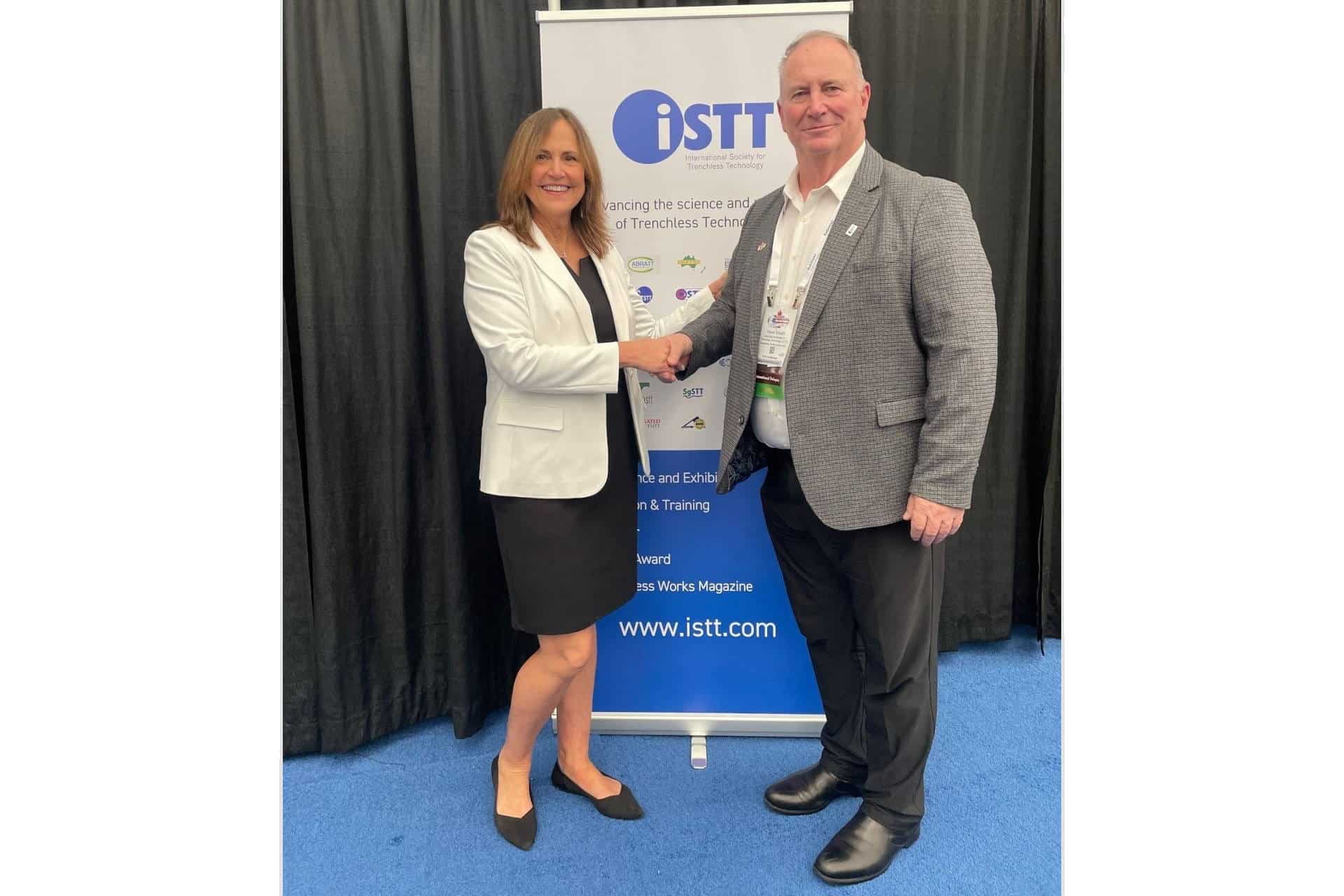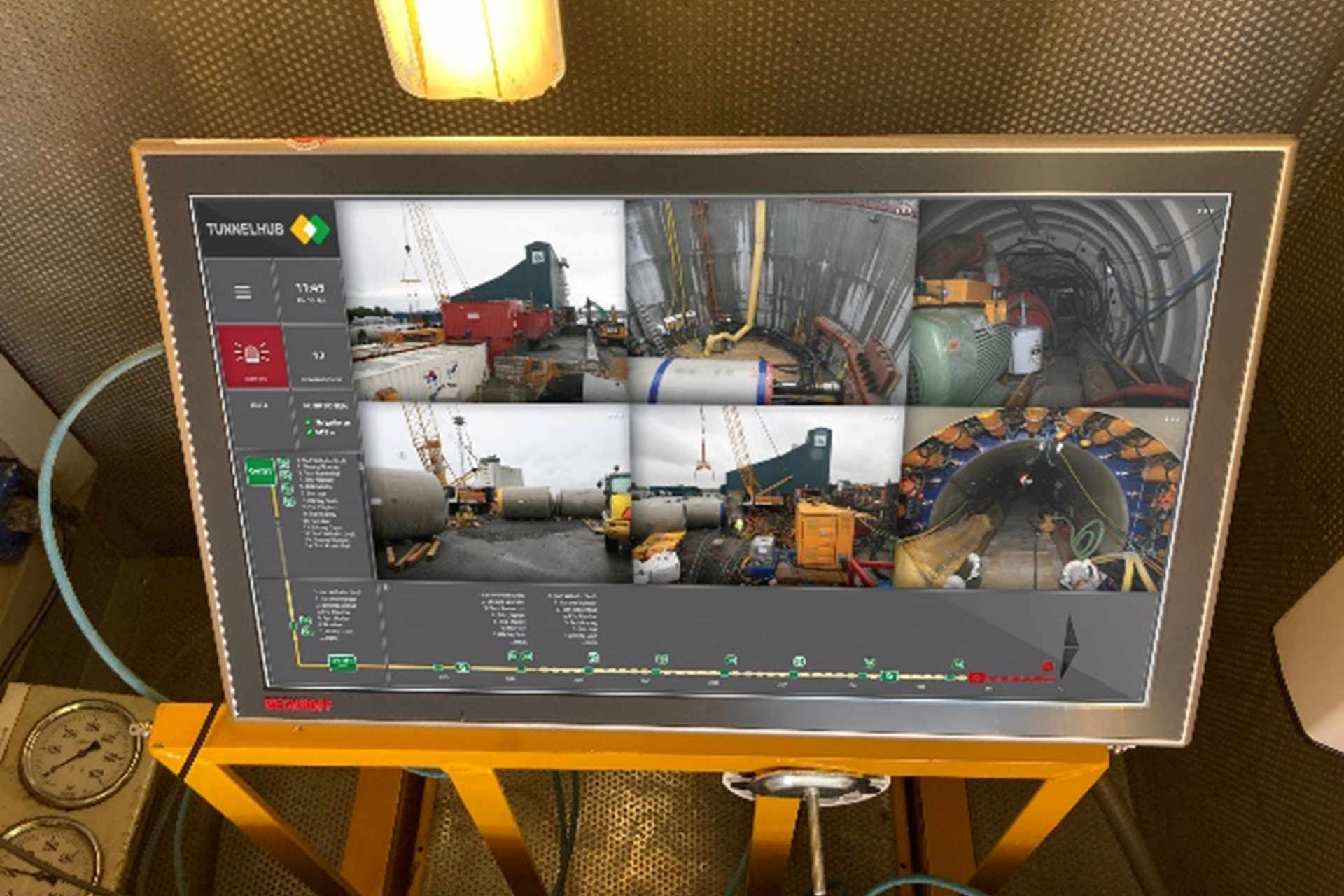The Dynamics of the Hire/Buy Market
 For more than 20 years the trenchless industry worldwide has grown from anembryonic, limited application family of technologies to a globally-recognizedalternative to open trench works, where circumstances permit.
For more than 20 years the trenchless industry worldwide has grown from anembryonic, limited application family of technologies to a globally-recognizedalternative to open trench works, where circumstances permit.
The limits on where trenchless technology cannot be applied seem to beshrinking by the day and it is often local economies, employment requirementsand the availability of international funding that now dictate the willingnessto make trenchless the system of choice rather than the technical limitations orpracticality of the technology available.
It is, therefore, not surprising that over the two decades, a variety of waysof accessing trenchless equipment and individual technologies havedeveloped.
The Buy Option
The primary method of obtaining trenchless systems since their appearancehas, of course, been to buy them outright and then working tirelessly to ensurethat there is a sufficient workload for the equipment to justify its capitaloutlay and its maintenance and running costs. Initial and ongoing training ofthe operating crew is also an important issue, either as replacements for thosewho leave or to ensure that the
system is operated in the safest, mostefficient way in line with current capabilities and expectations. This couldalso involve additional equipment add-ons and redesigns or rebuilds and there-training this may require for crews.
While this may sound ominous and arduous, it is something that all equipmentowners understand and take into account before deciding to buy particularequipment. But the ongoing workload is the key to ownership success,particularly for smaller contractors with very specific markets. There arerecent painful memories in some countries of the high demand for HDD to installnational strategic, IT networks, followed by machines lying idle when thedistribution market slumped.
Of course few, if any, equipment end-users are willing to simply go out andbuy a piece of equipment and all its support and ancillary equipment withoutknowing fully its capability. So over the past two decades, there have beenseveral ways developed by which potential buyers can satisfy their backgroundknowledge requirements.
Often in the early years, manufacturers were required to undertake testprojects, often at cost price, where a system was provided, with operators, to acontractor to complete a series of test installations under a variety ofconditions, with the view that if all went well, the likelihood was that theequipment would subsequently be purchased. Occasionally, however, this systemwas abused and several projects were completed using this test regime without amachine or system actually being purchased from the manufacturer, leaving itwith effectively a second-hand machine to sell.
Another option is to buy second-hand. This does of course have its ownparticular drawbacks. These include, amongst others, limited access to theoriginal equipment manufacturer (OEM) should spares and upgrades be needed,unless the second-hand purchase is through the OEM and carries its ownwarranties or guarantees; limited access to new crew training or retraining forsimilar reasons if the equipment purchased is unfamiliar within the company; andpotentially limited expert on-site field support should unforeseen difficultiesarise on any particular project.
On the other hand “try-before-you-buy” is still often an option within manyequipment supply companies, although it’s more tightly controlled than theoption may have been in the past.
The Rental Option
So what other options are there? The most obvious one is the hire/rentaloption.
Using the hire option, the end-user should have access to well-maintained,fully serviceable equipment with full technical back-up and training for crews,if the equipment is not actually hired with its own workforce. Other advantagesbesides day-to-day maintenance include: no ongoing need to maintain or re-buildor refit equipment, as this is the hire company responsibility. Normally a quickresponse to problems by the hire company is built into the agreement andexpertise is available from the hire company should field problems occur. Andshould a system fail in the field, the ultimate recourse of demanding adifferent machine can be used.
But there can be disadvantages in relying on the hire option. Machineavailability may not always be instantaneous if a company fleet is fullyoccupied, so that clients just have to wait until one comes available or lookelsewhere. Cost is also a question, once a machine has been purchased, everypenny earned is a penny toward first machine overheads and running costs withthe remainder being profit to the owner. As with most hire options, from dailycar rental to holiday company charter flights, comparison of cost on an hour byhour basis normally shows hiring to be relatively more expensive. But if hiringis done on an irregular basis, this cost may well be much less than owingequipment over the longer term, particularly if workload is sporadic, whilestill being profitable for both contractor and the hire company.
Lease-hire is another option. This is a half way house between outrightownership and rental. It has the advantages of backup and support that are usualfor an outright rental, but has the advantage that some of the hire charge isbeing used as a down-payment on full purchase. There are break options in theagreement so that the potential purchaser can buy in at an economic price ifmore work is obtained for the machine, or the lease can be terminated. Many ofthe large earth-moving machines seen on the large civil engineering sites indeveloped countries are on lease-hire for the period of the project and are thensold on to second users, often in developing countries.
The Hire Market
Given the pros and cons of hiring equipment against buying it, it would beuseful to see how hire companies themselves view the hire market. While readersmay think that hire markets in different parts of the world probably have asimilar ethos, interviews with a select few, relatively well-known, U.K.-basedcompanies gathered some interesting opinions on the matter without letting outany commercial secrets.
When asked what type of business they undertook all said that they both hiredand sold equipment and were not purely hire-only companies, with eachrepresenting a variety of different manufacturers from seals and test equipmentthrough pipe bursting and HDD suppliers to microtunnelers.
Although all companies approached were U.K.-based, areas of operation variedfrom United Kingdom only, through the United Kingdom and Europe, to worldwideavailability, with the latter being a circumstance that might not be expected ofa hire company given the transport costs involved.
Despite all those who contributed to this article being well recognized ashire companies, an interesting statistic was that amongst those surveyed, thehire/buy dynamic showed that at best, the hire/sale split in business terms was50-50. In one instance, the sales portion of the business was around 85 percentwith hire being 15 percent. The average was around one-third hire withtwo-thirds sales by turnover.
User Advantages
As well as the more obvious savings on capital outlay and maintenance costs,hiring equipment also offers contractors the convenience of being able to offerclients an extra service that was previously not available. Hiring, unlikebuying, also allows the user to utilize the latest technology and gives greaterchoice of options rather than trying to do work with a limited range ofequipment. Rental is also tax efficient as it allows the contractor toconcentrate on its specialist area, for example pipe laying/replacement, ratherthan having to manage a complete plant division. Most rental companies can alsoprovide administration support and financial feedback as part of the hireservice. Hiring of equipment also provides for end-loaded contracts and allowsthe contractor to hire or off-hire items of equipment as demand fluctuates.
When asked if it were possible to quantify a cut-off point between wherehiring is the most suitable option and where buying becomes preferable, no onecould offer a simple answer. The consensus was that there are basically too manydenominators on which the choice depends. Factors such as contractor size, thefacility to maintain owned equipment and the profitability of any one equipmentitem under these circumstances are key to the decision. Also, as previouslymentioned, the ongoing workload for any one piece of equipment is also a majordriving factor. If a piece of equipment is likely to sit in the yard for 50percent of the year, is buying it a realistic option given the capitalinvestment and maintenance cost involved?
There also seems to be an element of individual company preference. Somecompanies just will not hire and prefer to have equipment of their own even ifit is sometimes idle while others would rather hire and leave the equipmentworries to someone else, provided when they hire kit it works and has sufficientsupport and back-up from the rental company.
In reality, however, there seems to be an agreement among the surveyed rentalcompanies that most contractors are more than willing to discuss options forboth hire or purchase and negotiated variations in between these extremes.
It was also interesting to note that the survey revealed that anythingbetween 20 and 50 percent of contractors initially hiring equipment have beenseen to go on to buy similar or more up to date versions after hiring. Althoughone rental company did point out that when this has
happened, the contractormay only then buy around 50 percent of its actual predicted equipmentrequirement leaving the remainder as rental to allow for the market demandfluctuations mentioned earlier.
Demand Fluctuations
Within the rental sector, there is sometimes the option to hire with orwithout a trained crew, who work within the normal operations of the contractordoing the hiring. Where high-tech equipment is hired it is not unusual for acrew to be hired. This was particularly true for the microtunneling segment ofthe hire market where around 95 percent of all rentals were with crew.
Where somewhat less technical or support/ancillary equipment was hired,normally few items are hired with a crew. However, in these instances initialtraining is often required as part of the first rental agreement, with futurerentals being undertaken by the previously trained crews. At present, upward of50 percent of companies utilizing the rental option have trained personnelavailable to use hired equipment.
In terms of market demand, response was varied. Feedback ranging from “Themarket is static at the moment” through to “Our business varies with the stateof the market, if there is more work we hire more equipment” or ‘Business seemsto be getting stronger by the day” shows that this is still a difficult marketto predict.
In answer to questions about growth areas, some companies were reluctant togive too much away. However, in general terms, the consensus was that thepotential for the hire sector in the United Kingdom was good because increasingnumbers of contractors are seeing demand for trenchless systems growing amongsttheir client bases. This has meant more contractors looking to use trenchlesssystems they may not have previously considered. Hiring gives them theopportunity to offer services not previously associated with that particularcompany.
One point, however, was that some trenchless systems seem to run in phases,depending on the method in favor at any one particular time. Renovation systemsone year, bursting techniques the next and so on. This cycle is definitelyclient led.
One particular company did predict a move toward sales as opposed to hire,presumably because the demand for the systems is increasing making on-goingworkloads more predictable.
While this survey has been generally based on the U.K. scenario, thecompanies surveyed were asked how they see the hire/buy dynamic workinginternationally. Some simply did not have a view as they were purely U.K.operators. Others with limited or wider experience of the international marketdid seem to think that the United Kingdom was something of a special case withfar more pro-rental companies than most other countries. It also appeared thatthe contractor population in the United Kingdom had grasped the concept andadvantages of equipment rental early on. One comment was that population densitymay be a driving factor here. For example in the United States and Australia,where vast land areas exist and distances between equipment provider andend-user may be huge, the idea of machine rental and efficient support of rentedequipment by the rental company was difficult to conceive. Even in countrieswhere population densities are higher, there are still regions — for examplerural France — where one-hour or four-hour response times, as offered by someU.K. rental companies, would be a practical impossibility with normalinfrastructure and access availability.
Conclusion
While any contractor in the world has to answer the question “Do I hire myequipment or do I buy it?” for many the answer is quite simple: Buy — becausegeography and accessibility and onsite support are the driving factors. Thiswould appear to be why there is limited scope for hire companies in some partsof the world. This does not, however, preclude rental as an option if a regionof a country is sufficiently active in trenchless technology where, within itsown borders, a rental market could become established.
It does appear that for a rental company to be successful, contractors needto perceive the main advantages and see them as pertaining to their particularsituation.This perception must be that equipment is available to rent whenrequired without too much undue delay, the equipment support mechanism is thereand able to respond to adverse situations quickly and that the market isrelatively predictable within the hirer’s sphere of operation to enableequipment to be ordered in good time.
The U.K. market seems to fit this very well. It is, in relative terms, asmall country by land area, with a lot of work going on in a variety of markets(water, gas, wastewater, etc) being undertaken on a competitive basis by a widerange of contractors in a marketplace that needs minimum environmental impactand disruption to everyday life.
Ian Clarke is freelance writer and owner of No-Dig Media Services, based inthe United Kingdom.




